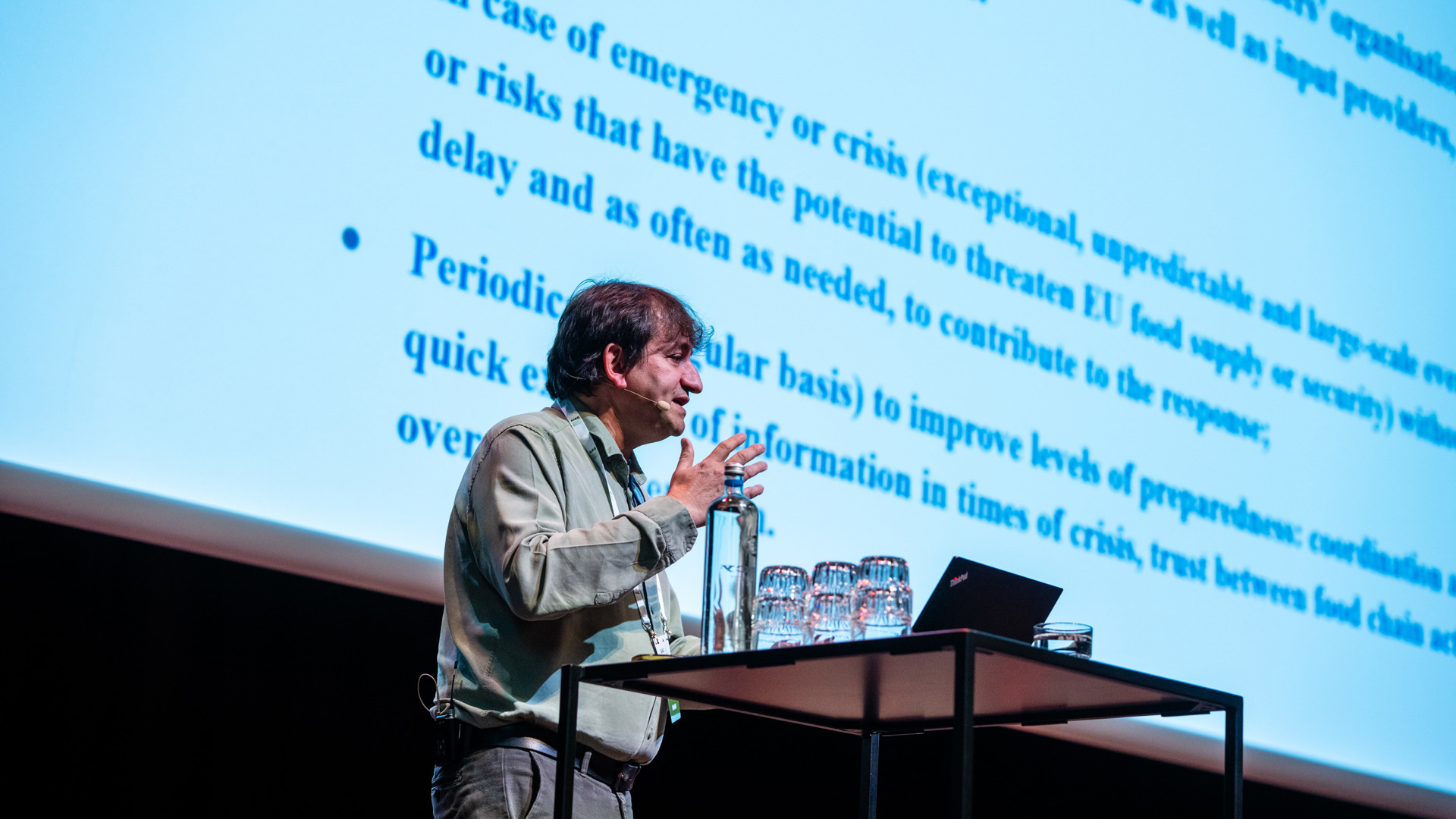
First of all, the European Commission is monitoring the impact of weather events on the development of crops. Data from this years spring and summer shows that this continent faced lots of different adverse weather conditions. “For example, in spring 2024, we had a rain surplus for example in France, England, The Netherlands and Germany and rain deficit in parts of Poland. And already this spring Italy and Hungary had to deal with a temperature surplus. In June, July and August there was a rain surplus in Spain, France and Germany and almost all of Europe was facing hot spells. These extreme weather conditions impacted various crops in quite a significant number of countries.”
Growing number of uncertainties
According to Santini the weather is not the only risk for food security. Recently both the outbreak of COVID and the Russian aggression in Ukraine impacted supply chains. Besides weather uncertainties, his team is also noticing a growing number of sources of risks that are causing uncertainty to the food supply chain, including farms.
Think of the increasing input costs and commodity prices, low margins, outbreaks of diseases, the need to import critical goods and logistical and transport bottlenecks. But also emerging worries about potential labour shortages in farming, excessive dependency on digital technology and an increasing exposure to cyber-attacks.
Santini: “What we have to do, is to be ready to face them. And to be able to do so, I want to emphasize two important aspects: mitigation and preparedness.”
Mitigation: resilience and vulnerabilities
“To mitigate risk, we need to have a good mapping of not only the risks but also the vulnerabilities. How do they imply that there might be an impact on the supply chain? We reviewed these perceptions through the recent stakeholder survey Risks and vulnerabilities in the EU food supply chain.” Among the top factors of vulnerabilities:
1 Policy and regulatory constraints and risk communication issues.
2 Lack of financial resources or limited economic margins.
3 Low flexibility to change.
4 High dependency on certain imports/export markets.
5 Lack of (technological) alternatives, research or infrastructure.
He continues: “If you look at the political agenda from the EU Commission expressed in the Vision for agriculture and Food adopted in February 2025, these vulnerabilities are reflected in 4 priority areas: building a sector that ensures a fair standard of living. A competitive and resilient sector. Future-proofing the agri-food sector that works hand in hand with nature. And valuing food and fostering fair living and working conditions.
Preparedness: the EFSCM
“Mitigation, mapping vulnerabilities and adequate risk management, is the first thing to do. But crises always can occur,” Santini explains. “The other lesson we learned from COVID is to be prepared to face a crisis at any time. And to be able to respond to it, the European Commission started the European Food Security Crisis preparedness and response Mechanism (EFSCM) in 2021. This mechanism consists of 27 EU member states, 14 non-EU countries and 46 stakeholders’ organizations. It is convened in case of emergency or crisis without delay and as often as needed. And periodically to improve levels of preparedness: coordination, quick exchange of information and trust between food chain actors over the longer term. There already is an example that it worked. Because when the war in Ukraine started this mechanism made the EC save several weeks to identify priorities and act upon it.
Response
Even when prepared, we also to have to respond to crisis by appropriate crisis management. Since 2023 the agricultural reserved at least 450 million euro per year. And up to now 2.5 billion euro has been used since 2013 in exceptional market measures.
Santini concludes: “This response mechanism is very important to reflect the solidarity within the EU, the solidarity between member states, and citizens and farmers. But it never will be enough to compensate the total damage to farming. So yes, it helps a safety net. But I do want to conclude that mitigating risks and vulnerabilities is the key element.”